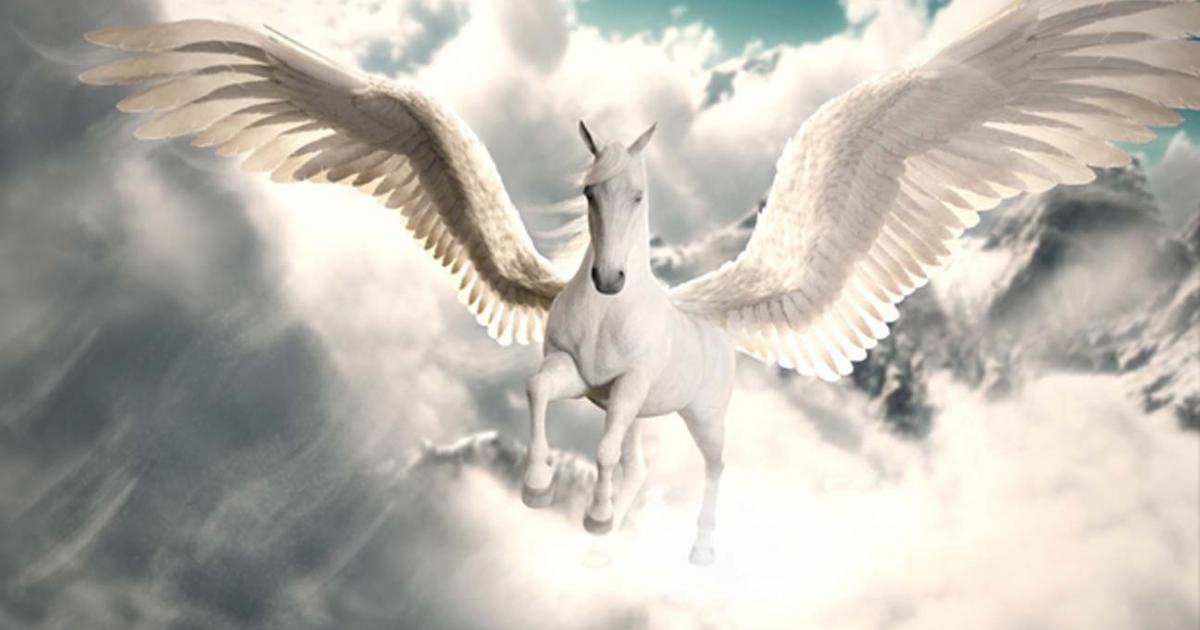
Eight Legendary Creatures from Greek Mythology That You Might Not Know About
Ancient Greek mythology is filled with heroes, gods, and epic adventures. The stories told in the myths are interesting and engaging enough that most of us will be familiar with at least a few, and many of their heroes and creatures are a part of popular culture even now.
It is astounding how many of the mythological creatures we are familiar with today are rooted in Greek mythology with the phoenix, sirens, dragons, griffins, cyclopes, centaurs, sphinxes, giants, werewolves, unicorns, vampires, and even zombies making appearances in the Greek myths alongside well-known named figures such as Medusa, Pegasus, and the Minotaur. The list is seemingly endless.
Perhaps the huge number of mythical creatures recounted is down to the fantastic extant literary resources for Greek mythology such as the Odyssey and the Iliad, as well as a wealth of archaeological evidence such as the scenes from mythology presented on both red and black Greek figure pottery.
Whatever the reason, the fact remains – there are a staggering number of bizarre creatures detailed in Greek mythology and not all of them are as well known today as some of their counterparts.
Dracaenae
Mermaids are humans with the lower body of a fish and centaurs are humans with the body of a horse. But what are dracaenae?
Dracaenae are a type of creature in Greek mythology with the upper body of a beautiful woman and the lower body of a fearsome dragon. The most famous of the dracaenae was Kampe who was tasked with guarding the gates of Tartaros. Kampe was a formidable creature and along with the body of a dragon, she had a scorpion’s tail capable of injecting deadly venom, hundreds of vipers around her feet, the heads of fifty beasts such as bears and wolves around her waist, and a large pair of black wings.
With the resurgence in popularity of dragons thanks to movies like The Hobbit and shows like Game of Thrones it is surprising the Dracaenae are not more well known.
- Pre-dating the Minoans: The Cycladic Civilization and Their Unusual ‘Modern’ Art
- Before the Olympiad There Was The Panathenaea – The Greek Festival and Games to Honor Athena
- The Real Story of Medusa and the Gorgons

Echidna a Scythian Dracaena. (Mantichore / CC BY-SA 4.0)
Stymphalian Birds
Best known as being the sixth labor of Heracles, Stymphalian birds are a fearsome sounding bird from Greek mythology. They get their name from their supposed location – a swamp in the real-life location of Stymphalia. The birds were supposedly man-eating with blade like metallic feathers which they could launch at their targets. As if that wasn’t enough, they also had sharp bronze beaks and their droppings were said to be poisonous.

Heracles killing the Stymphalian birds with his sling. (Jastrow / Public Domain)
Cerastes
Cerastes, which translates to “horned”, were a type of serpent in Greek legend. They were said to be totally boneless and to have a large pair of horns, similar to rams’ horns. Leonardo Da Vinci wrote about the cerastes and described them as ambush predators.
The cerastes is one creature in the Greek myths that is thought to be based on a real animal. The horned viper, a snake which can have hornlike lumps over its eyes and ambushes its prey is thought to be the inspiration, though the real life cerastes can’t kill anything as big as its legendary counterpart.
Onocentaur
The onocentaur is the less glamourous cousin of the centaur. It is still part human, but the other part is donkey. Pythagoras and later Aelian both described the onocentaur as having a wild and violent temper and being completely untamable.
The onocentaur was described as having the hind legs of a donkey. Its front half was a bit more complicated – it could use its arms to run on all fours, but its front legs became arms which could pluck and carry items if it needed.

Onocentaur. (Fæ / Public Domain)
Aeternae
With a huge number of bizarre creatures in the Greek myths and legends, it takes a lot to be a candidate for “weirdest creature”, but the aeternae are one of the contenders for the title.
The aetarnae were mentioned in the travels of Alexander the Great. They killed several of his men with the bony, saw-like protuberances which sprouted from their heads. The description is so bizarre that it is difficult to picture how the aetaerne must have looked, but some people have suggested they may have been nothing more than antelopes.
Scylla
A large number of the creatures in Greek mythology are sea monsters. As Greece is made up of multiple islands and the Greeks were seafarers this is no great surprise.
One of the stranger sounding sea monsters is Scylla, who appears in The Odyssey. She is described by Homer as having a crab-like shell, twelve feet hanging from her horrific body, six necks, three rows of teeth on each of her heads. Her name is similar to the word “skyllô” which means “to tear something to pieces.”
Despite this Ovid describes Scylla as having a pretty face and in Metamorphoses he notes that she was once a sweet young girl.

Scylla. (Viral Killer / YouTube)
Myrmekes
For anyone scared of insects the myrmekes, a type of gigantic ant, are nightmare fuel. It is Herodotus that first described them in very specific terms as larger than a fox, but smaller than a big dog. Supposedly native to India, they hoarded gold which the local tribes would attempt to steal.
The ants were not only huge, but frighteningly fast and the tribes who attempted to steal their gold had to work out an elaborate system to outsmart them and steal the gold.
Crocotta
The crocotta is another of the mythical Greek beasts that feature a strange array of different animal parts. It had the haunches of a stag, the neck, tail, and breast of a lion, the head of a badger, cloven hooves, and a mouth which opened as far back as its ears. On top of this terrifying description, it was said to mimic the voices of men.
While some sources say it was another name for the hyena, there are others that insist it was a hybrid between a hyena and a lion, or something else entirely.
- Enhance Your Memory with this Ancient Greek Memorization Technique
- Mapping the Menacing Sea Monsters in Medieval and Renaissance Cartography
- Is There Any Truth to the Existence and Damning Character Assassinations of Mighty Legendary Cyclopes?

Crocotta. (donnaquinn)
The tremendous number of mythical creatures with their origins in the Greek myths can tell us a lot about the society who conjured them. There are those such as the cerastes which originated with the exaggerated or miscommunicated descriptions of exotic animals from far off lands, a testament to the lengths the Ancient Greeks were able to travel. Others embody the fears of the Ancient Greeks, with the huge number of water-based spirits and sea monsters indicating how perilous their journeys could be.
The surviving literary accounts and examples of artwork depicting these creatures show the complexity of Ancient Greek society, and the fact we know about so many of them even today highlights how much they valued sharing and preserving their culture.
Top image: Flight of the Pegasus. Source: storm / Adobe.
References
A Book of Creatures. 2016. Calopus. [Online] Available at: https://abookofcreatures.com/2016/09/04/calopus/
Atsma, A. Date unknown. Kampe. [Online] Available at: https://www.theoi.com/Ther/DrakainaKampe.html
Attalus. Date unknown. Aelian: On the Nature of Animals. [Online] Available at: http://www.attalus.org/info/aelian.html
Herodotus. 1987. The History. Translated by David Gren. University of Chicago Press.
Homer. 800 BC. The Odyssey. [Online] Available at: http://classics.mit.edu/Homer/odyssey.html
Hutton, W. 2005. Describing Greece: Landscape and Literature in the Periegesis of Pausanias. Cambridge University Press.
Ovid. 1 AC. Metamorphoses. [Online] Available at: http://classics.mit.edu/Ovid/metam.html
Richter,J. P. 2014. The Notebooks of Leonardo Da Vinci. Createspace Independent Publishers.
Rose, C. 2001. Giants, Monsters, and Dragons: an Encyclopedia of Folklore, Legend, and Myth. W.W Norton and Company
















Comments
The description of the crocotta reminds me of an entelodont. So possibly its not a myth.